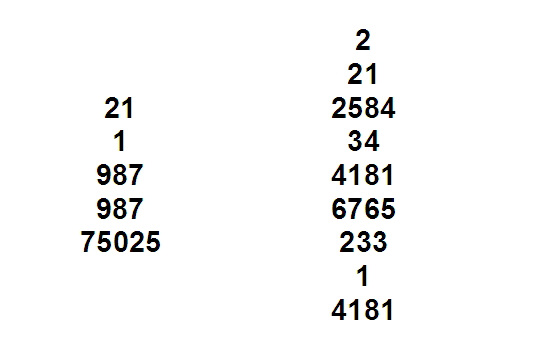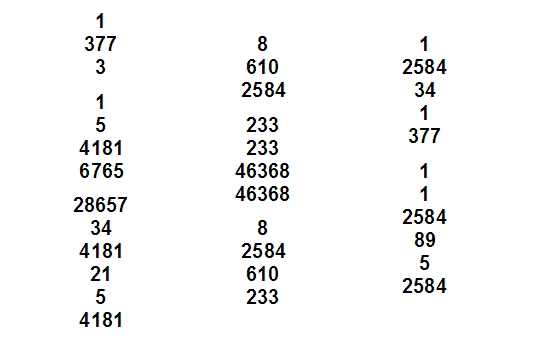
This year the code was based on the sequence of numbers ‒ a favourite of mine ‒ named after Leonardo of Pisa (c.1170 ‒ c.1250), usually referred to as Fibonacci, meaning “son of Bonacci”, who introduced the idea to Western European mathematics.
The Fibonacci sequence is defined by
Fn = Fn-1 + Fn-2
where
F0 = 0
and
F1 = 1
‒ so each number in the sequence is the sum of its two predecessors.
Fibonacci numbers occur in interesting ways. They are related to the angular arrangement of leaves around a stem. They have applications in computing and economics. The ratio between consecutive numbers tends to the “golden ratio”, (1+√5)/2, as n increases; rectangles whose sides are in this ratio have been seen as aesthetically pleasing and have appeared in art and architecture.
Each number in the message represents its position in the sequence and thereby a single letter by the letter’s position in the alphabet. The sequence of these letters spell out the message. The relevant part of the sequence for the code is:
|
Fn |
n |
letter |
|
0 |
0 |
|
|
1 |
1 |
A |
|
1 |
2 |
B |
|
2 |
3 |
C |
|
3 |
4 |
D |
|
5 |
5 |
E |
|
8 |
6 |
F |
|
13 |
7 |
G |
|
21 |
8 |
H |
|
34 |
9 |
I |
|
55 |
10 |
J |
|
89 |
11 |
K |
|
144 |
12 |
L |
|
233 |
13 |
M |
|
377 |
14 |
N |
|
610 |
15 |
O |
|
987 |
16 |
P |
|
1597 |
17 |
Q |
|
2584 |
18 |
R |
|
4181 |
19 |
S |
|
6765 |
20 |
T |
|
10946 |
21 |
U |
|
17711 |
22 |
V |
|
28657 |
23 |
W |
|
46368 |
24 |
X |
|
75025 |
25 |
Y |
|
121393 |
26 |
Z |
So, for example, the first number on the card, 21, is F8 and represents the eighth letter of the alphabet, H.
Unfortunately, since F1 = F2 = 1, there is an ambiguity in that A and B are both represented by the number 1. But the meanings should be clear from context: I don’t imagine anyone will think the season is Christmbs or that I have changed my name to Arian Aarker.
Front page

This translates as:
Inside page

This translates as:
There was no obvious way to encode digits using this code, so I couldn’t encode the new year in arabic numbers and had to use roman numerals instead.
Version 3: Revised 18 December 2019
Brian Barker